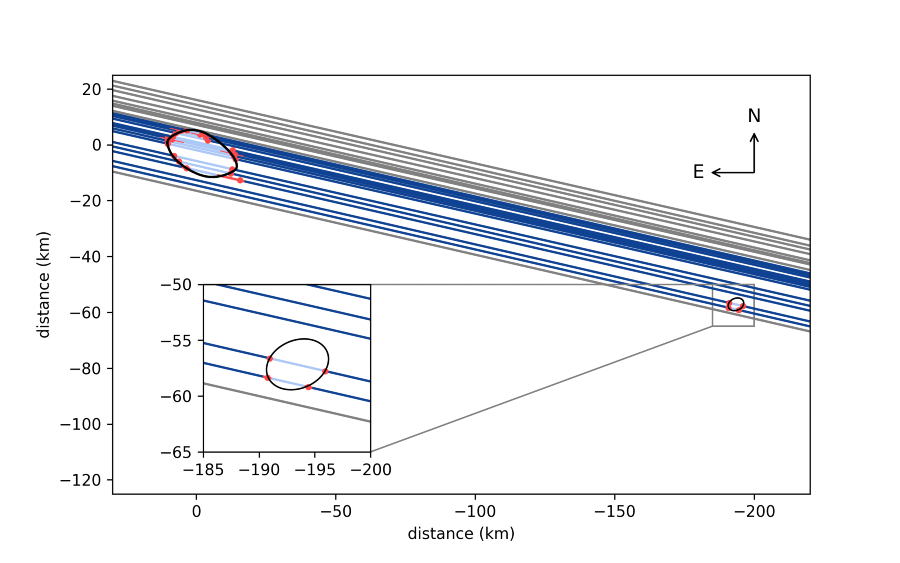
Lucy is NASA’s space mission to detect Trojan asteroids. It will visit a main belt asteroid and seven Jupiter Trojan objects, but the detection mission has added another celestial body! Lucy’s scientific team discovered by occultation that the smallest Trojan asteroid, Polymele, has its own moon.
Polymele happened to pass in front of a 10.36-magnitude star on March 27, allowing the team to observe the star disappearing when it was briefly obscured by an asteroid in the central United States. Lucy’s team organized 26 professional and amateur astronomers, spread over the path of the visible occultation, to precisely measure the position, size and shape of Polymele. To observe occultations, astronomers predict the path of the shadow through Earth based on the known orbit of the asteroid and the precise location of the occulted asteroid. The team set up multiple telescopes along a path perpendicular to the shadow, recorded the number of seconds the asteroid obscured the starlight, and then calculated the width using the known speed of the asteroid. Since each group of telescopes observed different occultation times, scientists determined the two-dimensional outline of the asteroid by combining data from different locations. As a result, 14 teams reported observing stars being obscured by asteroids. Fortunately, the other two groups of observers also saw stellar obscuring outside the obscuring area, which must be caused by satellites.

▲ Team member Anthony Dalba observed the Polymele occultation image.
According to observational data, Polymele is believed to be 27 kilometers wide at its widest, with a satellite diameter of about 5 kilometers and a distance of 200 kilometers between the two celestial bodies. Following planetary naming conventions, the team doesn’t name moons until their orbits are determined. Because the satellite is too close to Polymele to be seen by Earth or space telescopes, confirmation won’t take place until Lucy approaches Polymele in 2027.
Launched in October 2021, Lucy will begin a 12-year exploration mission targeting the Trojan asteroid, an unexplored group of asteroids located at Jupiter’s Lagrange points (L4, L5) orbiting the sun . Trojan asteroids are remnants of the formation of the solar system that have remained nearly pristine since then, making them time capsules billions of years ago, providing important clues to studying the history of the solar system and even the origin of life. Lucy will study six Trojan asteroids, and in January 2021 the team used the Hubble Space Telescope to discover that one of the Trojan asteroids, Eurybates, has small moons. Now that Polymele’s satellite has been discovered, Lucy can observe at least 9 celestial objects.

▲ Polymele occultation results.
(This article is reproduced with permission from the Taipei Planetarium; the source of the first image: NASA)
Further reading:

New technological knowledge, updated from time to time

